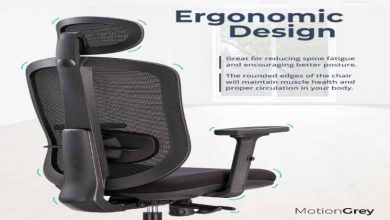Getting Back on the Road: A Guide to Collision Repair

Accidents happen, and even a minor bump can leave your car looking worse for wear. Collision repair returns your vehicle to its pre-accident condition, ensuring safety and aesthetics. This article explores the collision repair process, helping you navigate the steps involved and understand what to expect from a reputable repair shop.
Assessing the Damage: The Importance of a Detailed Estimate
After an accident, the first step is to get a professional assessment of the damage. A reputable collision repair shop will conduct a thorough inspection, considering:
- Body Damage: Dents, scratches, and panel misalignment are assessed for severity and repair options.
- Frame Damage: A bent frame can compromise your car’s structural integrity and handling. Frame straightening might be necessary in some cases.
- Mechanical Issues: The impact might have affected mechanical components like suspension or steering. A collision repair shop will check for any underlying mechanical problems.
Once the inspection is complete, the shop will provide a detailed estimate outlining the repairs needed, the parts required, and the estimated cost. This estimate helps you understand the scope of the work and make informed decisions about your repair plan.
The Repair Process: From Frame Work to Flawless Finish
The collision repair process typically involves several stages:
- Frame Repair: If the frame is bent, specialized equipment is used to straighten it back to its original specifications. This ensures the car’s structural integrity and safe driving performance.
- Panel Repair: Dented or misaligned panels are repaired by pulling, shrinking, or replacing damaged sections.
- Bodywork and Painting: Once the panels are properly shaped, imperfections are filled, sanded smooth, and prepped for painting. Paint matching ensures a seamless, flawless finish that blends perfectly with the rest of the car’s exterior.
- Parts Replacement: Broken or severely damaged parts like bumpers, headlights, or fenders might need to be replaced entirely.
- Safety Checks: Before returning your car, the repair shop will perform a comprehensive safety inspection to ensure all systems function correctly and the vehicle meets safety standards.
Finding the Right Shop: Considerations for Quality Collision Repair
Choosing the right collision repair shop is crucial for a successful repair experience:
- Reputation and Certifications: Look for shops with a good reputation and certifications from industry associations like the National Institute for Automotive Service Excellence (ASE).
- Warranty: Ensure the shop offers a repair warranty, providing peace of mind and protection against future issues.
- Insurance Network Participation: Many shops work directly with insurance companies, streamlining your claims process. Click here for more details: shayari
- Communication and Transparency: Choose a shop that clearly explains the repair process, keeps you informed throughout the project, and addresses any questions or concerns.
Beyond the Repair: Ensuring a Smooth Claims Process
If your accident involved insurance, working with your insurance company is an essential part of the collision repair process:
- File a Claim: Report the accident to your insurance company and initiate the claims process.
- Work with Your Adjuster: An insurance adjuster will assess the damage and work with the repair shop to determine a repair plan.
- Understand Your Coverage: Review your insurance policy to understand your coverage limits and deductibles for collision repairs.
Conclusion
Collision repair doesn’t have to be a stressful experience. By understanding the process, finding a reputable shop, and working effectively with your insurance company, you can ensure your car is restored to its pre-accident condition, both functionally and aesthetically. Remember, prioritizing quality repairs safeguards your vehicle’s value and, more importantly, your safety on the road.



